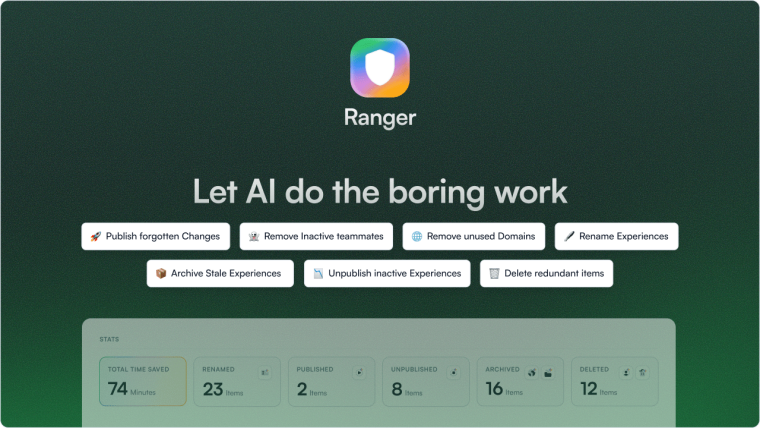Got a meeting with your CEO or potential investors? Looking for a way to prove the success of your product with numbers? Or do you simply want to back up your decisions with more than just opinions? Key performance indicators (KPIs) are the way to create data-driven proof of your actions and strategies as a PM.
Knowing how to effectively measure the progress of your team, product, and business is an essential requirement for success. Quality, company-specific, and measurable KPIs can help you communicate more effectively and achieve goals that translate into company success.
In this article, we’ll dive deeper into the definition and uses of 10 key KPIs with formulas you can use to become a more goal-driven Product Manager.
KPIs monitor performance through quantitative metrics and help determine if your company is achieving its goals and product vision
Keep in mind that KPIs and OKRs are different. In a nutshell, KPIs represent how you measure your journey to OKRs.
KPIs can relate to product usage, product quality, product development, and business performance. Consistent data reporting is essential for tracking KPIs.
When choosing which KPIs to track and measure, start with setting up your goals
What are product management KPIs?
KPIs monitor performance through quantitative metrics and help determine if your company is achieving its goals and product vision. They’re a way to measure what’s working and what’s not.
Product Managers use KPIs as a data-based backup for decision-making. They are the evidence used to build strategies that work.
KPIs help you answer questions like:
How to prioritize your budget spending?
How to find out if a new approach is actually working?
How much overall profit your product is bringing in?
There are tons of ways you can use KPIs in your product team. They not only give you a way to measure product and customer success but they can also help you make better decisions.
You can use KPIs to create clear goals, track progress, assess risks, influence decisions, execute product strategy, and so much more.

🎬 Webinar: Product Trends - Leadership Roundtable
Join our panel discussion with SaaS product leaders to help you strategize and scale in 2022 and beyond.
How to report on KPIs
In order to track and report on KPI progress, it’s essential to identify your starting point. It’s usually up to the PM to lay out the KPIs according to what they determine to be the most important metrics to track.
Once you’ve defined your KPIs, you’ll need to find a way to report on them.
First, decide on the frequency of your KPI updates. It can be weekly, monthly, quarterly, and so on—whatever works for your product.
It’s important to remember that KPIs need to stay flexible and adapt to user needs, business goals, and even strategy pivots. As you get the results, use the quantitative data side-by-side with qualitative data to gain a comprehensive understanding of your business operations.
You’ll also want to ensure you’re able to communicate these KPIs effectively. Putting KPIs and metrics at the center of company procedure help create strong evidence-based objectives that can be understood by everyone involved.
Speaking of objectives, keep in mind that KPIs and OKRs are different.
KPI vs. OKR: What’s the difference?
KPIs measure performance in relation to a clearly established and achievable goal.
OKRs—short for Objectives and Key Results—are used for new goals and initiatives. OKRs are commonly used when a business is starting something new or making a strategic change.
In other words, the difference between OKRs and KPIs is that OKRs are desired goals and the impact of your work towards achieving those goals, and KPIs show how successful your efforts have been in achieving those goals.
While both KPIs and OKRs are measurable, and both relate to performance, they are not the same thing. KPIs are precise performance metrics while OKRs help you decide what needs to be adjusted or changed to drive the growth of the KPI numbers.
Both KPIs and OKRs are essential for managing business goals and product growth. Think of OKRs as your end goals and of KPIs as a way to ensure you’re on the right track for achieving them.
Now that we’ve got clear on what KPIs are, here are key product management KPIs any PM should track. Let’s get stuck in.
10 KPIs every product manager should track
When choosing your main product management metrics, you can divide them up into four main categories:
Product usage
Product quality
Product development
Business performance
Let’s look more closely into each category and explore 10 effective KPIs that offer valuable quantitative insight into your product team's performance.
Product usage KPIs
Product usage KPIs help you identify how your product is perceived and used by your customers.
Tracking metrics like churn rate, DAUs/MAUs, and customer acquisition costs over time will give you an in-depth look at user behavior. This will also help you make product functionality and user experience decisions.
1. Trial drop-off rate
A drop-off rate measures the percentage of users who signed up for a free trial and started using your product but then quickly stopped, abandoned it, and left.
This gives valuable insight into first-time user experience, as well as the interactions they take within your web app during the trial.
Here’s how to calculate the trial drop-off rate.

If your drop-off rate is high, you need to strategize new ways to capture user attention with onboarding flows that will help them reach the value and activate more quickly.
Or, you might find that you need to craft a better value proposition and make sure you deliver on the promise you give users before they enter.
2. Customer Acquisition Cost (CAC)
This metric calculates the total costs spent on gaining new customers. It includes marketing expenditure, sales teamwork, human resources, and advertising. Generally, customer acquisition cost operates by setting a specific period of time and total revenue.
Here’s a CAC formula.

Customer acquisition costs help you evaluate the value of a customer in order to determine the success of product marketing efforts. The goal is to ensure the CAC is substantially lower than the customer's lifetime value.
3. Daily Active User/Monthly Active User ratio (DAUs/MAUs)
The number of fixed users on a monthly basis is one of the most important metrics to track product usage. It's not just the number of subscribers, it's about the number of active users.
This KPI tracks how many visitors or users you have daily (DAU) or monthly (MAU).
How to calculate the DAUs/MAUs ratio? Here’s a simple formula.

The true value comes when you combine this KPI with CAC. Here’s how TJ Lokboj, Co-Founder of SyndicationPro, explains it.

I recommend tracking both DAUs and customer acquisition costs (CAC). DAUs can tell you how many users actively use your product on a given day. On the other hand, CAC can show you how much money you have spent to acquire those users. Combining these two metrics gives you a more accurate picture of platform health.
Product quality KPIs
Product quality KPIs can identify patterns and potential risks in delivering a quality customer experience. As a Product Manager, you need to understand how to balance quality alongside delivery timelines.
Keep in mind that one negative user experience can have a heavy impact on the business. With today’s social media accessibility, and third-party reviewing platforms, customers can easily share their experiences–both good and bad–so product quality KPIs should be top of your list.
1. Customer Lifetime Value (LTV)
A customer’s lifetime value defines the total revenue generated by a customer over their whole relationship with your business. This helps you understand how much your customers are worth financially and how much future revenue you can make from new users if they remain loyal.
This KPI helps you determine how much money you can spend to attract a new customer compared to their potential profit.
Here’s a formula to help you calculate LTV.

As Will Yang, Head of Growth at Instrumentl, explains:

The main reason why tracking LTV is so important is because it helps you decide what kind of products and services to offer, who to market them to, and when to make those offers.
2. Support tickets vs. Escalations
Support tickets are a good indicator of product quality and consistency. If there are no major changes or product updates that would cause more customer questions, the number of support tickets should remain steady.
You can categorize support tickets by the number of days, the number of tickets opened, and the number of escalations.
Here’s an example of measuring the KPI of support ticket consistency in correlation to escalations.

If possible, try to track the sentiment of support tickets, too. Perhaps tickets are being raised because your product is confusing, but that doesn’t necessarily mean that users are angry.
However, if support tickets are raised with a negative sentiment, then you’ve got a bigger problem on your hands that needs to be addressed more quickly.
💡 By addressing common support questions in various in-app messages, you can deflect thousands of tickets. This way, AvidXchange deflected 20,000 tickets over a period of 12 months. Here's how they did it.
Product development KPIs
Product development KPIs can identify process improvements, product growth velocity, and speed of development. Monitoring and sharing results across teams can help create motivation and cross-team collaboration between departments.
1. On-time delivery
On-time delivery is a way to measure product team performance against time commitments. This is a way to hold your team accountable in the development and testing stages. Accurately tracking progress against deadlines can help teams work together across departments and keep an up-to-date understanding of product timelines and backlogs.
This KPI helps you more accurately predict delivery timelines, and identify resources you need on board. It ultimately helps keep your users happy and away from churning.
How to track on-time delivery? This will depend on your product goals, roadmap, and the timelines that you set for your team. In general, you can keep on-time deliveries at a certain percentage per year, but keep in mind that it’s not about the number of new products you ship or new features you deliver—it’s solving the right problems for your users that matter.
2. Team velocity
Team velocity is used to help estimate how long product teams will take to finish a certain product development process or project.
Sharing weekly/monthly reports of this KPI with other teams and leadership allows for accurate time estimates for project completion and helps adjust roadmaps. This KPI can also help you identify talent gaps missing and ensure you bring the right hires to the table.
How to calculate team velocity? Count the number of work units or projects completed per time period. For example, you could keep a certain velocity over a sprint.
Business performance KPIs
Business performance metrics can often be overlooked despite the fact that they are a key step in identifying patterns and trends in the growth of your business. It’s important to create business KPIs that deal with customers, customer lifetime value, bookings, revenues, costs, and profitability. Here are some helpful metrics.
1. Customer churn rate
Customer churn refers to the number of customers lost in a certain time frame–usually measured monthly. It counts how many paying customers canceled their contracts with you.
Keep in mind that customer churn doesn’t include free trial users as they never converted into paying customers.
Since acquiring new customers costs five times more than retaining existing ones, it's a good idea to find out why customers may be leaving and to keep a close eye on these numbers.
You can calculate the customer churn rate with this formula.

2. Monthly Recurring Revenue (MRR)
Monthly recurring revenue refers to the measure of a company’s predictable income stream by month.
This KPI helps track performance across different subscriptions. These are typically not counted the same as single transactions because they happen regularly and are easier to account for.
MRR helps product managers track the growth or decline of monthly revenue streams and therefore understand the financial standing of the business.
When you track this KPI, you’re better able to predict short-term budget needs and adjust your product marketing spend accordingly. It helps avoid any nasty end-of-year surprises.
Here’s how to calculate MRR.

3. Net Promoter Score (NPS)
NPS is a way to measure how users feel about your product through a survey. NPS surveys enable customers to rate different aspects of your business and share how likely they are to recommend your brand to others on a Likert scale of 0-10.
Following NPS survey results, you’re able to segment users into three groups: Promoters, Passives, and Detractors. Each of these groups requires different attention, especially Detractors, so let’s start there.
Detractors need proactive engagement and attention as they’re at risk of churn. You ideally want to get in touch with these users to go through their issues and show them you care about resolving them.
Passives are a lower priority, but still at risk of churn. It could go either way—you want to make sure the odds are in your favor. Reach out for a chat about improving their experience with your product, and point them towards any resources that could be of use to them.
Finally, your Promoters are your superfans—also known as power users in the product-led growth world. They’re highly engaged and likely to recommend your product to others. Keep engaging these users with exclusive opportunities, such as beta testing new features and participating in feature development research. Helping them feel more connected to your brand only strengthens their affinity for it.
Understanding an NPS score enables you to act on issues before it’s too late. NPS scores can be used alongside other user feedback surveys—such as the Customer Satisfaction Survey (CSAT) and Customer Effort Score (CES)—to get a full picture of customer sentiment and ensure product success.

Create Microsurveys for continuous in-product feedback
Easily build no-code in-app surveys to collect contextual and targeted user feedback. Try for free.
How to align product management metrics with your product strategy
Finding out which KPIs are right for your product takes good judgment, collaboration, and innovative thinking.
To be able to make purposeful decisions, create a flexible product roadmap, and use the right product management software. This is crucial to the health of your team and larger business goals.
When you strategically plan for your product, remember that metrics are the way to measure if you’re reaching your goals. You need to set your objectives first, and then find or create the right KPIs that show you’re on track.
As Logan Mallory, VP of Marketing at Motivosity, shares, another important thing is to customize the KPIs to your specific needs. You want to be sure that you’re only measuring the data and statistics that are both relevant and helpful in making your product better.

There are many vanity metrics that can be measured but don’t actually have a significant impact, so there’s no need to measure them. These will vary depending on the type of your product, so be sure to take a good hard look at what you’re measuring and be sure to have a solid reason why.
KPIs back you up with the authority and credibility to make decisions and stick by them. This helps you master product development, drive product-led growth, and focus on the right product-market fit.
Track your product performance to make data-backed decisions
Here you are—one giant step closer to being a KPI expert.
To summarize, KPIs help you make data-driven decisions. These are metrics that unify an organization and get everyone on the same page. As a Product Manager, you have a hefty role to play and KPIs are the way you’ll influence the day-to-day life of your team.
We’ve only cracked the surface of metrics you could track as a PM—the list goes on and on, off into the horizon. But these are trusted examples to get you climbing steps on the stairway to metric-measuring success while keeping your customer satisfaction high.
Empower your team to drive customer success with Chameleon
Keep your customers engaged throughout their lifecycle with a suite of products for user onboarding, feature adoption, and continuous user feedback.







